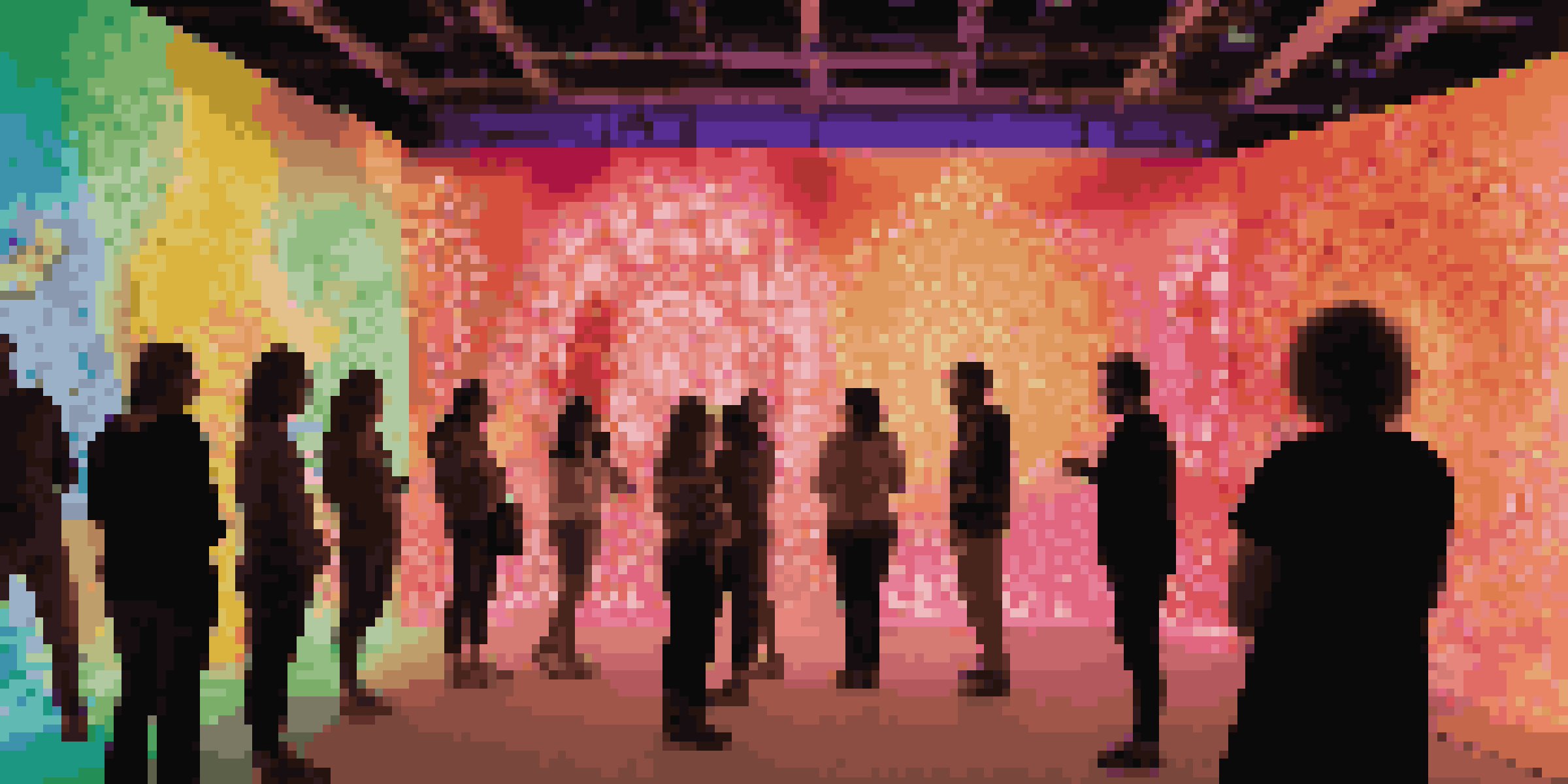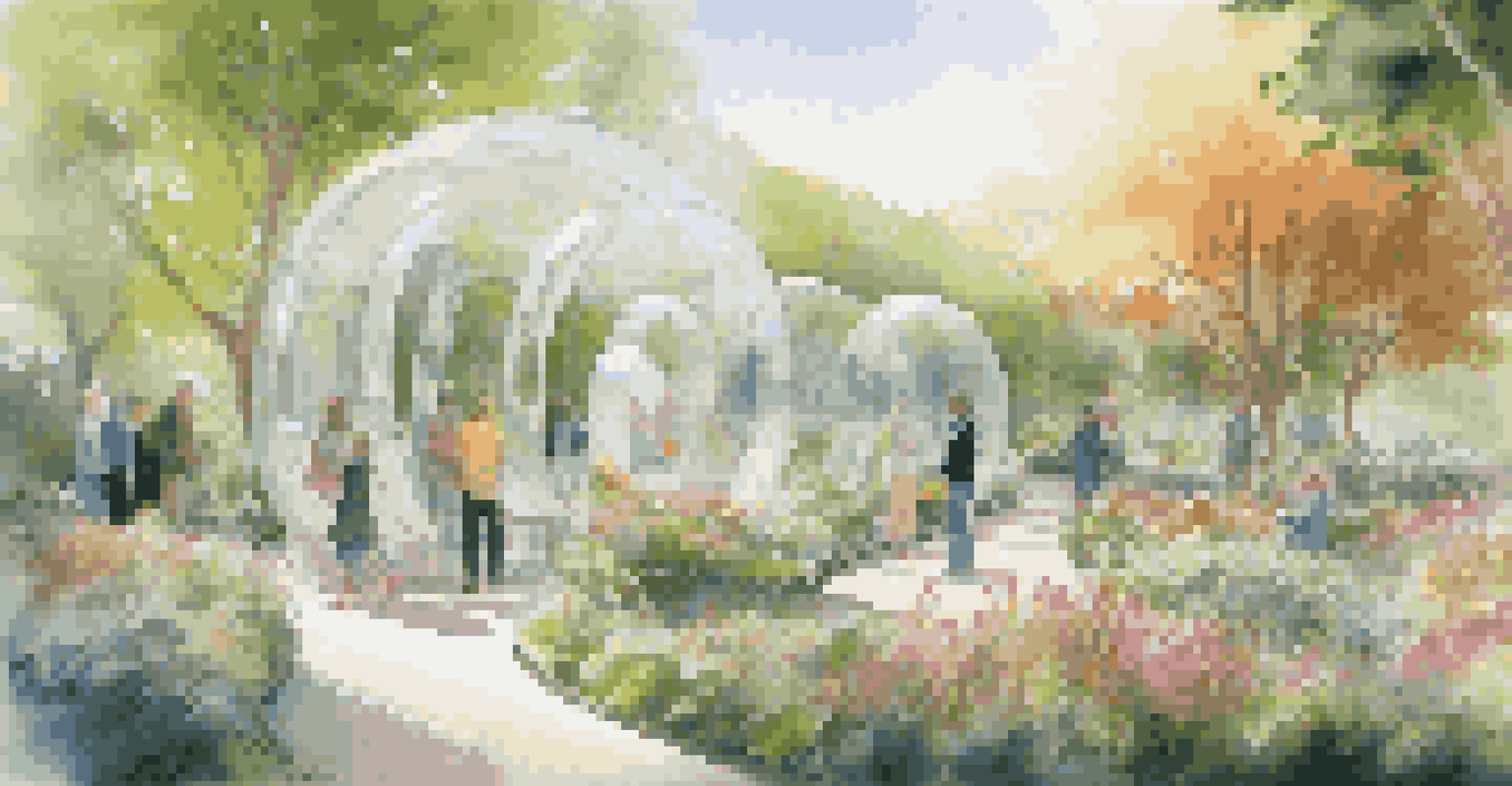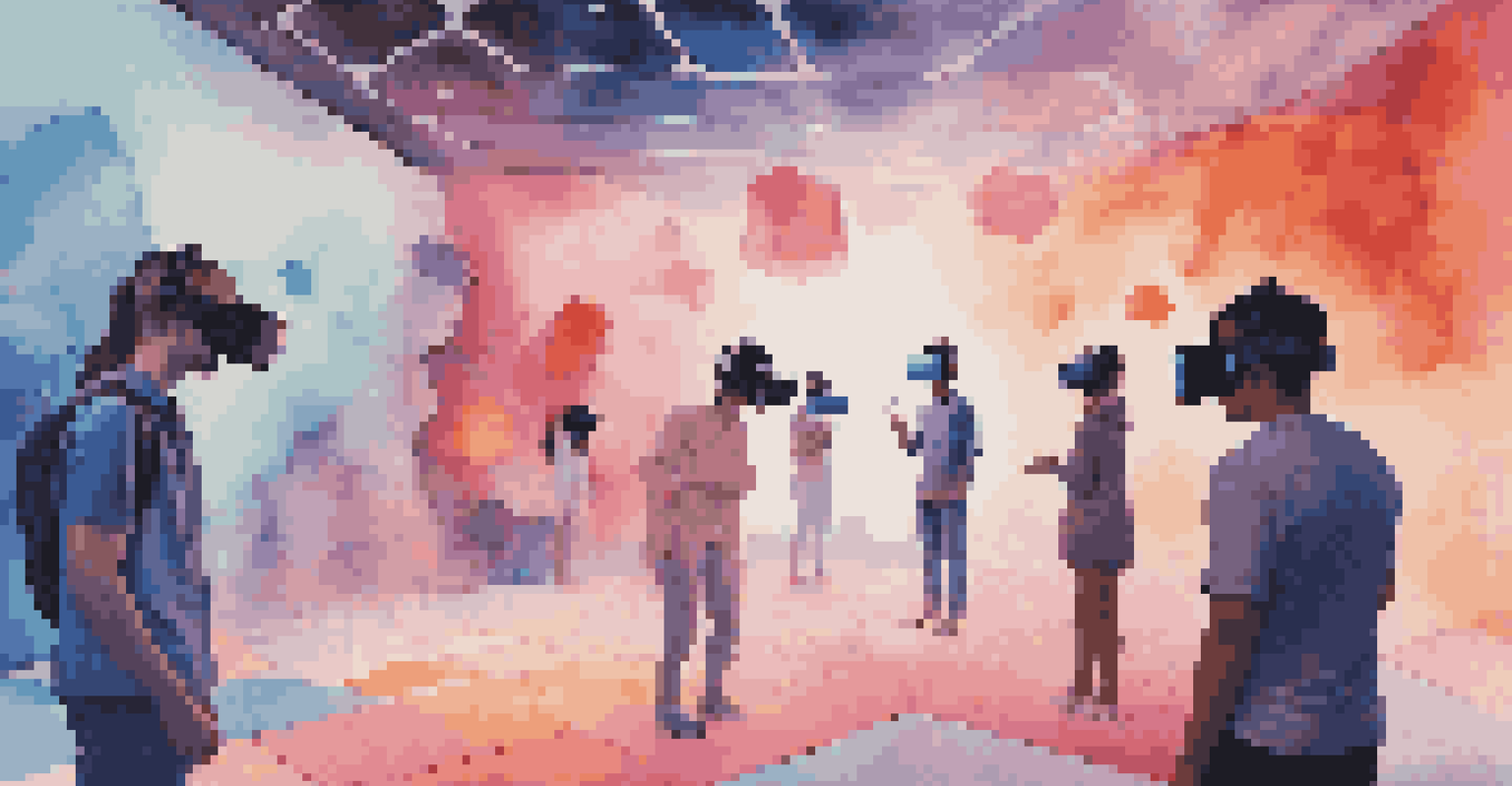Art Trends: The Growing Popularity of Experiential Installations

What Are Experiential Installations in Art?
Experiential installations are immersive art experiences that engage all the senses, inviting viewers to step into the artwork rather than just observe it. Picture walking through a vibrant, interactive environment where your movements and choices affect the art around you. These installations can include everything from soundscapes to interactive digital elements, transforming traditional art into a dynamic experience.
Art is not what you see, but what you make others see.
Essentially, they create a dialogue between the viewer and the artwork, breaking down barriers that often exist in conventional galleries. Instead of merely looking at a painting or sculpture, participants become part of the art, leading to a deeper emotional connection. This shift towards experiential art reflects a growing desire for personal engagement and interaction in our increasingly digital world.
As we delve into this trend, it’s essential to understand how these installations can evoke emotions and foster community, making art more accessible and relatable. By allowing audiences to physically engage, artists are redefining the role of the viewer and the purpose of art itself.
The Evolution of Experiential Art
The roots of experiential art can be traced back to the mid-20th century with movements like Dada and Fluxus, where artists sought to challenge the status quo. These movements paved the way for more interactive practices, influencing contemporary artists to explore the boundaries of viewer participation. Over the years, the shift has moved from traditional art forms to those that invite the audience to become co-creators.

Today, we see a surge in installations that utilize cutting-edge technology, like virtual reality (VR) and augmented reality (AR), to enhance the immersive experience. For instance, imagine walking through a digital landscape that reacts to your emotions or gestures, creating a unique experience for each visitor. This evolution not only reflects technological advancements but also a cultural shift towards shared experiences and community engagement.
Experiential Art Engages Senses
Experiential installations invite viewers to immerse themselves fully in the artwork, creating a deeper emotional connection.
As artists continue to push boundaries and redefine what art can be, experiential installations are becoming a central part of the contemporary art scene. They invite us to not just view art but to live it, making the experience memorable and impactful.
Why Are Experiential Installations Popular Now?
The growing popularity of experiential installations can be attributed to several factors, including the rise of social media and the desire for unique experiences. In a world where sharing moments online is the norm, people are drawn to art that offers something visually stunning and interactive. This trend has led galleries and museums to curate installations that are not only aesthetically pleasing but also shareable on platforms like Instagram and TikTok.
The best artist has no conception that a marble block does not hold within itself the idea of a statue, but the artist must be able to see beyond the surface.
Moreover, the increased focus on mental well-being and the importance of personal connections in our lives have made experiential art particularly appealing. These installations often provide a sense of escape and wonder, allowing individuals to immerse themselves in a different world, if only for a moment. This emotional engagement is something that many traditional art forms struggle to achieve.
Finally, as our society becomes more diverse, artists are responding by creating installations that resonate with a broader audience. This inclusivity not only attracts more visitors but also fosters a sense of community, inviting everyone to participate in the artistic experience.
Notable Examples of Experiential Installations
One standout example of experiential art is Yayoi Kusama's Infinity Mirror Rooms, where visitors step into a seemingly endless universe of lights and reflections. This installation captivates viewers by creating an immersive atmosphere that feels both personal and otherworldly. Such experiences not only leave a lasting impression but also encourage social sharing, further amplifying their impact.
Another remarkable installation is teamLab's Borderless, an exhibition that blurs the lines between art and technology. Visitors wander through digital landscapes that change in real-time based on their movements, making each journey unique. These installations exemplify how technology can enhance artistic expression while engaging audiences in a profound way.
Technology Enhances Art Experiences
The integration of advanced technologies like VR and AR allows artists to create dynamic and interactive environments that engage audiences in new ways.
These examples underscore the power of experiential art to connect people and create shared moments. As we continue to witness innovative approaches in this realm, it’s clear that experiential installations are reshaping how we perceive and interact with art.
The Role of Technology in Experiential Art
Technology plays a vital role in the development of experiential installations, allowing artists to create more immersive and interactive experiences. From projection mapping to virtual reality, these tools enable artists to push the boundaries of creativity and engage audiences like never before. For example, artists can create environments that change dynamically, responding to the audience's movements or emotions.
By integrating technology into their work, artists can also reach wider audiences. Virtual reality experiences can be accessed from anywhere, breaking down geographical barriers that often limit traditional art forms. This democratization of art allows more people to participate in the experience and fosters a sense of global community.
However, as we embrace technology in art, it's essential to remember the human element. The most impactful installations are those that create a balance between technological innovation and emotional connection, reminding us that art is ultimately about shared experiences.
The Impact of Experiential Art on Audiences
Experiential art has a profound impact on audiences, encouraging deeper engagement and personal reflection. When individuals step into an immersive installation, they often find themselves experiencing emotions and thoughts that they might not encounter in a traditional gallery setting. This heightened engagement fosters a deeper appreciation for the art and the artist's intent.
Moreover, these installations often create a sense of community among participants. As people share their experiences, whether in person or on social media, they contribute to a collective narrative that extends beyond the artwork itself. This communal aspect can lead to discussions and connections that enrich the overall experience.
Community and Inclusivity in Art
Experiential art fosters a sense of community by encouraging shared experiences and making art more accessible to diverse audiences.
Ultimately, experiential art invites us to not only observe but to feel, reflect, and connect. This shift towards emotional engagement is reshaping how we experience and understand art in the modern world.
The Future of Experiential Installations
As we look to the future, the potential for experiential installations seems limitless. With the rapid advancement of technology, artists will continue to explore innovative ways to engage audiences and create unforgettable experiences. This evolution will likely lead to even more interactive and immersive environments that challenge our perceptions of art.
Additionally, as societal values shift towards inclusivity and accessibility, we may see more installations designed to cater to diverse audiences. This could include adaptations for those with disabilities or projects that invite collaboration from various communities, ensuring that everyone has a chance to participate in the artistic experience.

Ultimately, the future of experiential art is about connection—between the artwork, the artist, and the audience. As we navigate this exciting terrain, one thing is clear: experiential installations are here to stay, and they will continue to enrich our understanding of art in profound ways.